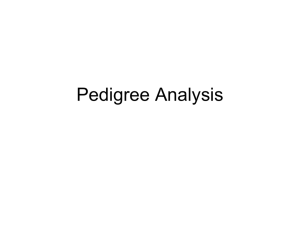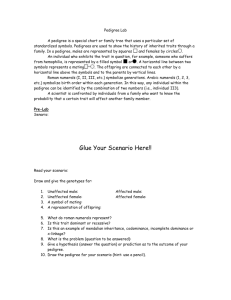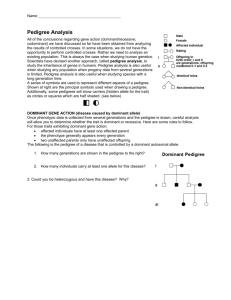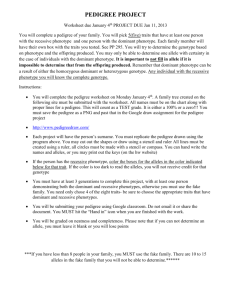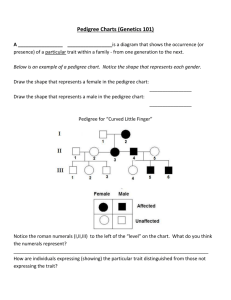Pedigree Analysis
advertisement
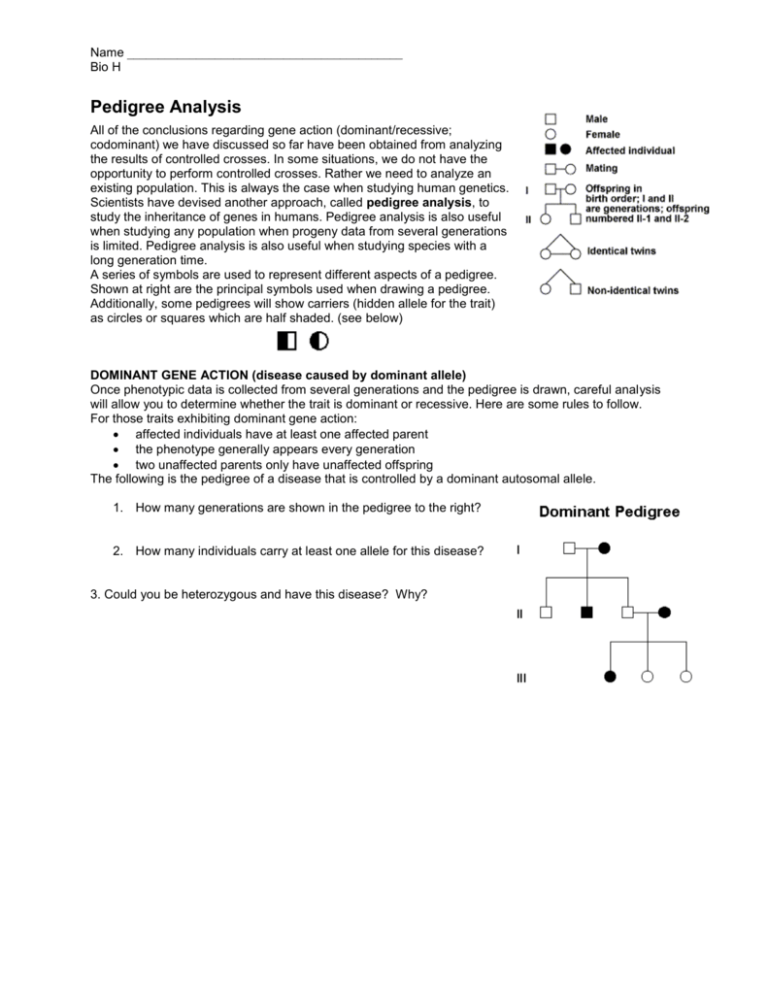
Name ____________________________________________ Bio H Pedigree Analysis All of the conclusions regarding gene action (dominant/recessive; codominant) we have discussed so far have been obtained from analyzing the results of controlled crosses. In some situations, we do not have the opportunity to perform controlled crosses. Rather we need to analyze an existing population. This is always the case when studying human genetics. Scientists have devised another approach, called pedigree analysis, to study the inheritance of genes in humans. Pedigree analysis is also useful when studying any population when progeny data from several generations is limited. Pedigree analysis is also useful when studying species with a long generation time. A series of symbols are used to represent different aspects of a pedigree. Shown at right are the principal symbols used when drawing a pedigree. Additionally, some pedigrees will show carriers (hidden allele for the trait) as circles or squares which are half shaded. (see below) DOMINANT GENE ACTION (disease caused by dominant allele) Once phenotypic data is collected from several generations and the pedigree is drawn, careful analysis will allow you to determine whether the trait is dominant or recessive. Here are some rules to follow. For those traits exhibiting dominant gene action: affected individuals have at least one affected parent the phenotype generally appears every generation two unaffected parents only have unaffected offspring The following is the pedigree of a disease that is controlled by a dominant autosomal allele. 1. How many generations are shown in the pedigree to the right? 2. How many individuals carry at least one allele for this disease? 3. Could you be heterozygous and have this disease? Why? Pedigrees demonstrating a disease caused by Recessive Allele For those traits exhibiting recessive gene action: unaffected parents can have affected offspring affected progeny are both male and female The pedigree of a trait controlled by recessive gene action is shown to the right. 1. Is this gene X-linked? How can you tell? 2. What illustrates that this trait is a recessive allele? 3. Is the father of the 3rd generation a carrier? Explain. 4. What is the likelihood that the individual in generation 3 that exhibits the disease will have offspring with the disease if her husband is heterozygous for the trait? Look at the pedigree of the last disease, shown below. The squares represent males, the circles represent females. Carriers are not shown, only those who demonstrate the disease. 1. What gender(s) exhibits this disease? 2. How many generations are represented by this pedigree? 3. How many children did the original parents in this pedigree have? 4. How many were sons? ____________________ 5. How many were daughters? __________________ 6. What type of allele produces this disease? Dominant, Codominant or Recessive? 7. Is it an autosomal disease, or is it X-linked? How can you tell? 8. Based on where the disease occurs, shade in (half shading) all individuals who the pedigree indicates are carriers.

